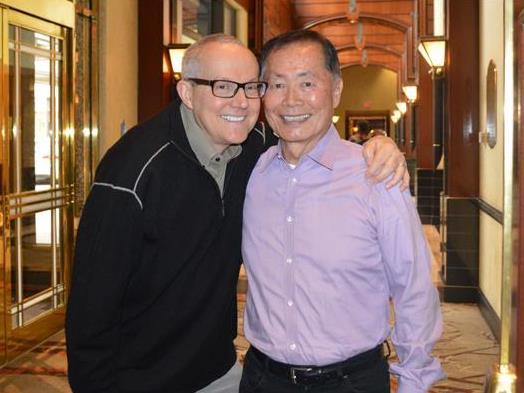George Takei may boast a science fiction series as his main claim to fame; however his cult status extends past that one popular property. As Star Trek’s Sulu in its original television incarnation and the first spate of films that followed, he garnered audience affection as he threatened to steal the spotlight from William Shatner and Leonard Nimoy. In the years since, his optimistic outlook and genial demeanour has seen him become an established pop culture figure.
Riding a wave of stardom, Takei has achieved what most actors can only hope for: enduring fame on his own merits, no longer tied to his on-screen actions or output. Accordingly, Jennifer M. Kroot’s (It Came from Kuchar) documentary To Be Takei has an easy subject, one teeming with affection and interest – but the film never forgets the rationale for his appeal. On TV and in film, Takei provided a rare cultural role model, inspiring generations that followed. Off camera, he continues to speak out for causes near and dear to him, ranking among the most prolific and well-known activists for same sex relationship rights and marriage equality.
With the now 77-year-old Takei a willing guide through his life and times, his recognisable voice leads the way through highs and lows. Clips furnish the details, including examples of his work with Jerry Lewis and John Wayne, and on The Twilight Zone and Hawaii Five-0, but it is the commentary, not the content that matters. As intermingled with present-day footage of Takei and his partner of more than two decades, Brad Altman, his achievements weren’t without their cost. His current status, evidenced in abundant footage of his public appearances and interviews, comes after a consideration of roles that pandered to racial stereotyping, and the need to keep his sexuality hidden to continue to get work for much of his career.
For all fun that comes from Takei being his usual charming self on all matters of his public presence, it is the more serious side of the documentary that leaves the firmest imprint. His later-in-life embrace of his orientation is joyfully and thoughtfully celebrated, deepened by its evolution from his adolescent experiences. As a Japanese-American during the Second World War, he was relocated into camps ringed by barbed wire, and marginalised when the ordeal was over. Just as relevant high-profile chats fill in the gaps of the showbiz side of his story, here his sister Nancy helps tell family history and recollections of their upbringing. His undying positivity – ‘I don’t believe in negativity,’ he posits – is all the more remarkable when furnished by this sombre context. That it all culminates in the passion project he calls an internment play, the musical Allegiance, is similarly noteworthy.
It is unsurprising that personality and humour provides the glue that binds the varying moods and missives of the film together, and helps patch over the aesthetically, narratively and structurally standard piecing together of a not-so-standard true story. To Be Takei may be an obvious tribute, but it is earnest, energetic and endearing. To be George Takei is to create a legacy that radiates warmth, rallies for change, and exceeds his entertainment impact.
Rating: 3 out of 5 stars
To Be Takei
Director: Jennifer M. Kroot
USA, 2014, 93 mins
Revelation Perth International Film Festival
www.revelationfilmfest.org
3 – 13 July
Actors:
Director:
Format:
Country:
Release:





